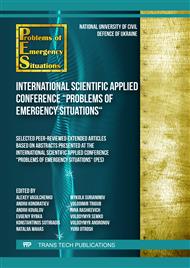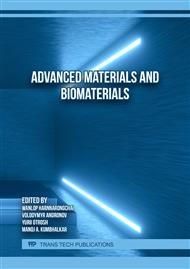[1]
S.F. Klovanich, Metod konechnyh elementov v nelinejnyh zadachah inzhenernoj mehaniki. – Zaporozhe, 2009 [in Russian].
Google Scholar
[2]
S. Timoshenko, S. Woinowsky-Krieger Theory of Plates and Shells. New York, Toronto, (1959) 635.
Google Scholar
[3]
G. Bach, Versuche mit zweiseitig aufliegenden Eisenbetonplatten bei konzentrierter Belastung. Heft 53. Berlin, 1923.
Google Scholar
[4]
Bach G und Graf. Versuche mit allseitig aufliegenden, quadratischen und rechteckigen Eisenbetonplatten. Berlin, 1915.
Google Scholar
[5]
H. Duddeck, G. Griebenon, G. Schaper, Material and time dependent non-linear behavior of cracks concrete slab// Nonlinear behavior of reinforced cocncrete spatial structures. v.1. Preliminary Report, IASS Symp., Darmstadt, 1978.
Google Scholar
[6]
D. Kochkarev, T. Azizov, A. Azizova, T. Galinska, Designing of Standard Cross Sections of Composite Bending Reinforced Concrete Elements by the Method of Design Resistance of Reinforced Concrete. Lecture Notes in Civil Engineering, 100 LNCE, (2021) 202–211.
DOI: 10.1007/978-3-030-57340-9_25
Google Scholar
[7]
DSTU B V.2.6-156:2010. Betonni ta zalizobetonni konstruktsii. Pravyla proektuvannia. Kyiv: Minrehionbud, 2010 [in Ukrainian].
Google Scholar
[8]
EN 1992: Eurocode 2: Design of concrete structures – Part 1: General rules and rules for buildings. Brussels, (2002) 230.
Google Scholar
[9]
James K. Wight, James G. MacGregor. Reinforced Concrete. Mechanics and Design. USA, (2009) 1157.
Google Scholar
[10]
T.N. Azizov, Teoriya prostranstvennoj raboty perekrytij. K.: Naukovij svit, 2001 [in Russian].
Google Scholar
[11]
A.S. Gorodeckij, I.D. Evzerov, Kompyuternye modeli konstrukcij. K.: Fakt, 2005 [in Russian].
Google Scholar
[12]
N.I. Karpenko, Teoriya deformirovaniya zhelezobetona s treshinami. Strojizdat, 1976 [in Russian].
Google Scholar
[13]
ACI Committee 318, "Building Code Requirementsf or Structural Concrete (ACI318-99) and Commentary (318R-99)," American Concrete Institute, Farmington Hills, Michigan, 1999.
DOI: 10.1061/(asce)1076-0431(1996)2:3(120.3)
Google Scholar
[14]
N.A. Cytovich, Mekhanika gruntov. M, 1973 [in Russian].
Google Scholar



